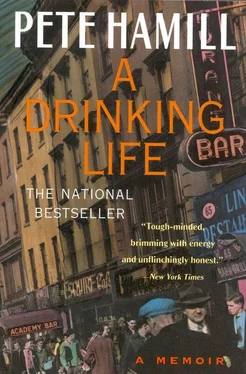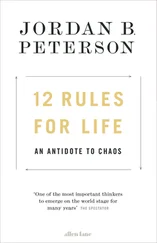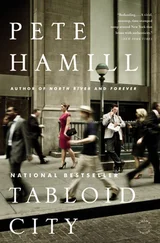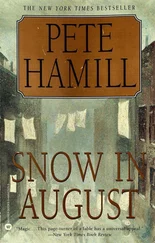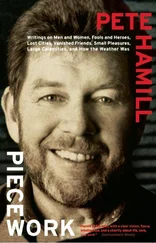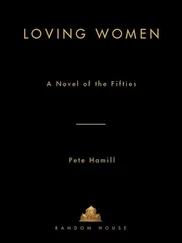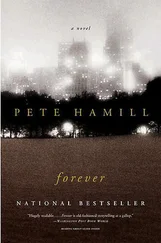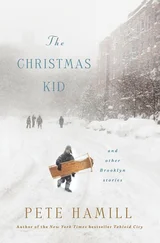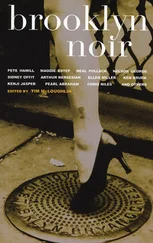One night in the Caton Inn, a dark joint on Coney Island Avenue with a huge horseshoe bar, a booming jukebox, and a dance floor, I was drinking with my girl, Catherine. My broken right hand was in a cast. Then a guy grabbed Catherine’s ass on his way to the men’s room and I spun him around and hit him between the eyes with the cast. His head bounced off another guy’s foot, breaking his toe. It became known as The Night Pete Hamill Broke Frank Christie’s Toe with One Punch.
Catherine was sweet, funny, a drinker, with dark hair cut in a bob, long legs, and smooth skin. All around us, people were getting married, as the men came back from Korea. It was assumed that we would be married too. My father knew her father; she lived two blocks from 378; I was told in a dozen different ways by several dozen grown-ups that there was nothing better than a good neighborhood girl. That year, Catherine went to a lot of baby showers. We went together to some weddings. She didn’t mind my drinking or fighting; that was what men did. She gushed about the drawings I took home from Pratt, giggled at the naked women, but looked blank when I tried to talk about a life as a painter. She didn’t dismiss the subject the way Maureen had; it just didn’t register with her. I could have been discussing the rings of Saturn. We ordered beers. We danced. She laughed at my jokes. We groped each other in the kitchen of her parents’ flat. I went home. Or stopped for a nightcap in a bar.
One day in the Daily News there was a story about the ongoing demolition of the Third Avenue El. The work crews were moving uptown from the Bowery and were about to reach Fourteenth Street. I felt a pang; a piece of the world I knew was going to disappear. But there was more to it than that. After work, I went down to Tenth Street and Third Avenue, secretly hoping that Laura had seen the same news item and would feel the same pang. A half block from the El, we had pleasured each other on winter nights. I told myself that I wasn’t in love with her; I didn’t even want to take her to bed; I just wanted to see her again and hear from her what had happened. From the Astor Place subway station, I walked slowly east along Tenth Street. At her building, I went into the vestibule and looked at the mailboxes, but someone else was living in the old studio. Then I walked to the corner. Third Avenue felt empty and hollow without the great dark iron structures of the El and the steel growl of the trains. I went into a bar and sat there for a long time, sipping beers, watching the street. But I never saw Laura again. I never saw her name in the art magazines. She wasn’t listed in the directories of American artists. She was gone forever.
BY EARLY 1956, I began to feel that I was vanishing too. The production manager at the agency had quickly decided I wasn’t what he needed; he was about to fire me. The art director, Ernie Waivada, saved me, out of an excess of Christian pity, and from him I started to acquire some minor skills. I could draw a straight line with a steel T square, for example. I could do simple pasteups and mechanicals. I could “spec” type and do some primitive lettering (taming my cartoony instincts). I knew about repro proofs and photostats and Photo Lettering. I was trusted to black out cut lines on negative photostats, to cut mats, to “gang” various small pieces of art for photostats. I managed to keep the job and was even given a small raise.
But at night in the dark, alone with myself, graphic design seemed a chilly discipline. It was basically a function of the intellect, and I was still in the sweaty grip of romance, full of Hemingway, reading the poems of García Lorca, soaking up James M. Cain, discovering the drawings of Heinrich Kley, copying George Grosz and Orozco. I still loved drawing human bodies, hair and teeth and flesh. I had much less interest in squares, circles, triangles, or the delicacies of Caslon Bold.
In the small studio, upstairs from a rug importer on Fifth Avenue and Forty-seventh Street, there was another man who came to work three or four days a week. His name was Dave Hills. He was in his sixties, with age freckles on his hands, his back hunched from years bent over drawing boards. He had been the first art director of the agency but now worked as a part-time freelancer on some of the minor work, such as employee newsletters. He had a few peculiar specialities, one of which was lettering that looked like rope. But he never talked about the glories of design. His fundamental medium was the Job. He had started out long ago and come through the Depression and the war; he was happy to be there at all. Then one day he announced that he was going to retire. He was packing up and moving to Mexico.
Why Mexico, Dave? I asked.
Oh, I don’t know, he said. I like the people. I like the country. I like the booze. And besides, it’s cheap.
At almost the same time, I received a letter from a navy friend who also wanted to be a painter. He enclosed a catalog for a school called Mexico City College, approved for study on the GI Bill, with an art department offering a bachelor of fine arts degree. The language of instruction was English, but there were extensive courses in the Spanish language. Maybe this is our Paris, my friend wrote. And besides, it’s cheap, said Dave Hills.
Suddenly Mexico cast a voluptuous spell. If a sixty-five-year-old man could pack up and go to Mexico, why couldn’t I? I sent the catalog to my friend Tim Lee, who was still in the army. Maybe, I wrote him, we could go there together. So what if nobody in the Neighborhood ever went to college; why shouldn’t we be the first? And in Mexico! The notion would not go away. In the agency, I was trying to letter a line of copy in Clarendon Bold and suddenly Orozco tore across my mind. I sat at the bar in the Caton Inn with Catherine and imagined hard brown mountains, cactus, distant volcanoes; bandidos out of The Treasure of the Sierra Madre; pyramids and lost cities; cantinas full of music and tequila and brownskinned women.
Are you okay? Catherine said.
Yeah, yeah.
You’re not drunk?
No, I’m not drunk.
I hope you’re not thinking about some other girl.
No.
Or one of those naked women from school.
No. No women. I swear. …
In February, Tim got out of the army. And we ended up one night at the bar in Boop’s.
What do you think? I said.
About what?
About going to Mexico.
He laughed out loud.
You’re nuts, he said.
I know, I said. But I’m serious.
He downed a beer, his brow furrowing, and said: Hey, why not? Why fucking not?
In May, we sent the application forms to Mexico, just to see what would happen. Weeks passed. The Mexico fever ebbed as I assumed that I faced still another rejection. Then, on a Friday, a plump letter trimmed with orange and green arrived in my mailbox. The stamps were from Mexico. I tore it open and discovered that I was accepted. So was Tim. After the cold rejection by Columbia, and the silence of Paris, I was giddy with jubilation and went off to Boop’s to celebrate. They did not have tequila at the bar so I got wrecked on vodka. On Monday, I gave my notice at the agency, telling Ernie Waivada that I would leave in late August. I gave no notice to Catherine. I just couldn’t tell her anything that was not a lie, so I said nothing. To save money for the trip, I took a second job, as a page at NBC, starting at six in the evening and working until one in the morning. That summer, every hour seemed packed with excitement and discovery, as I learned about the world of television while dreaming of Mexico. There was an added benefit: the long hours kept me from facing Catherine.
Meanwhile, Tim and I applied for U.S. passports and Mexican student visas. The summer raced by. Until the week before we left, none of it seemed real. We didn’t learn any Spanish, except the words for bread ( pan ), water ( agua ), and beer ( cerveza ). Three days before we left, I finally told Catherine. There were tears and scenes. I behaved badly.
Читать дальше
